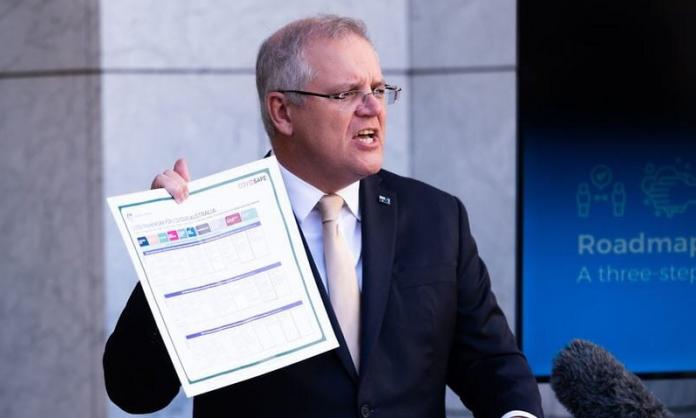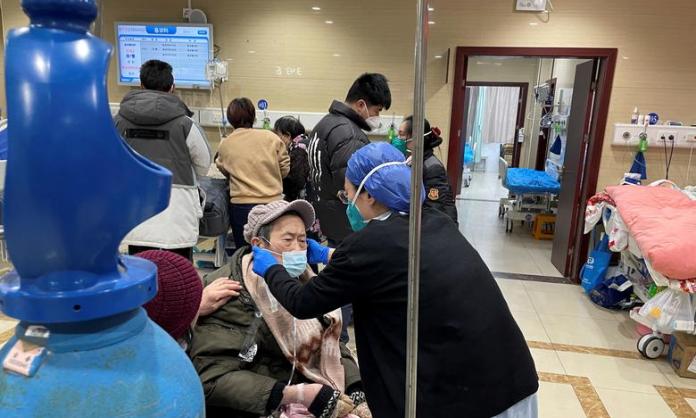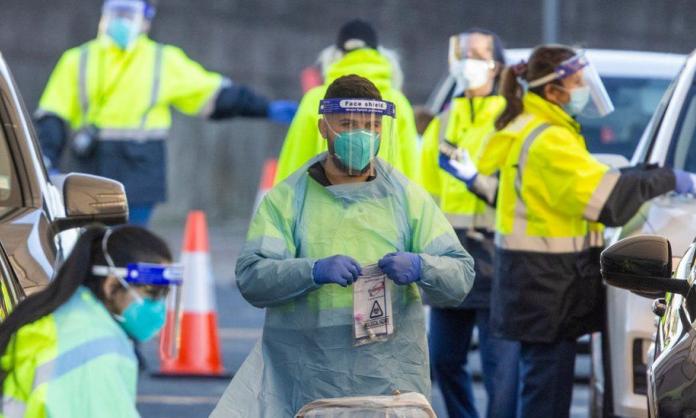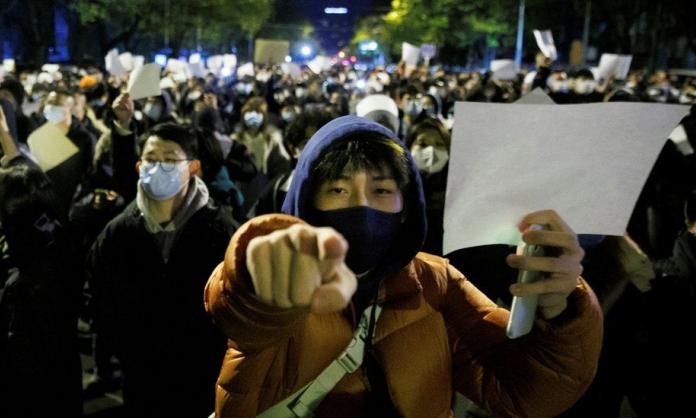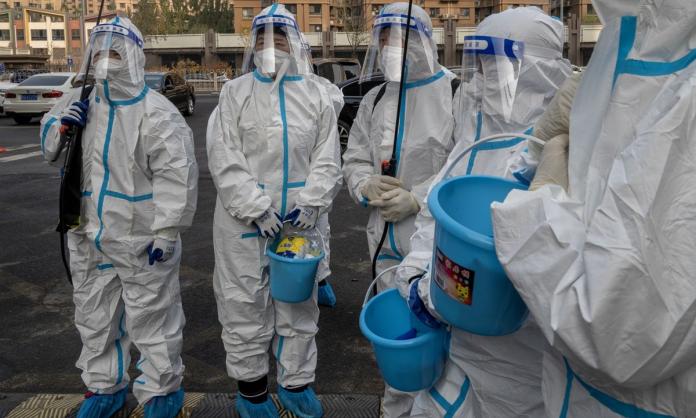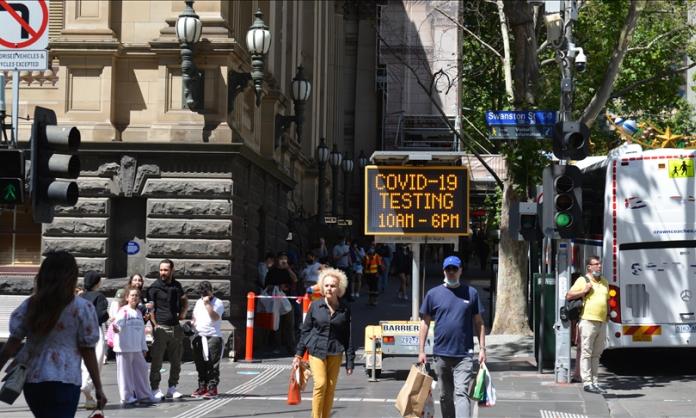The pandemic situation in Australia is currently on a knife edge. Australia showed last year that elimination of COVID is both desirable and possible. Elimination was hard won: many of the measures needed to get there were maintained despite relentless opposition from the bosses and the media and in some instances the Morrison government itself.
The collective achievements of last year are now at risk from the Morrison government’s new road map and the Berejiklian government’s refusal to impose a hard lockdown in NSW even as case numbers in the state rise relentlessly.
The Morrison government’s plan, released on 30 July and endorsed by the state and federal leaders a week later, proposes a four-phase reopening, contingent on increasing rates of vaccination.
With the full vaccination rate currently at just 22 percent of the eligible population, the road map for “Phase A” involves pushing coverage to 70 percent. Phase A makes allowances for “early, stringent and short lockdowns if outbreaks occur”, to be accompanied by effective test, trace and isolate capabilities. Given the inadequate state of hotel quarantine, Phase A maintains the recent halving of international arrivals but, indicating the desire to keep the bosses happy, also allows for limited entry of student and economic visa holders.
Phase B, when vaccination coverage has reached 70 percent, and Phase C, when it has reached 80 percent, will result in the most significant changes to current public health practices. In the first draft of the road map, published on 4 July, lockdowns were to be allowed in Phase B only “in extreme circumstances”. Public support for lockdowns has forced the prime minister into accepting that lockdowns, although “less likely”, will still be “possible” in Phase B. Phase C, however, prescribes only “highly targeted lockdowns”. Instead of lockdowns, the emphasis in Phase B would be “ongoing low-level restrictions and effective track and trace” and in Phase C, wide-ranging relaxation of restrictions on those who have been vaccinated.
Phases B and C would gradually open travel across state and international borders for those who have been vaccinated. Once again, special mention is made of increased entry of international students and economic visa holders, with a token nod to humanitarian admissions. No mention is made of elimination in either phase; only the minimisation of serious illness, hospitalisations and fatalities from COVID-19 through the implementation of “low-level restrictions”.
Phase D, to start at some unspecified point in the future, will involve unrestricted international travel for vaccinated people, without any caps or quarantine requirements, but also the right for unvaccinated people to travel to and from Australia, conditional on pre-flight and on-arrival testing. The stated goal is to make the treatment of the coronavirus “consistent with public health management of other infectious diseases” such as the flu. This would involve “minimising cases in the community without ongoing restrictions or lockdowns”.
What should we make of Morrison’s road map? One reading is that this is nothing more than a public relations exercise, an attempt to convey the impression that the government has a plan after weeks of floundering. Or, given the government’s flip-flopping on every aspect of the pandemic since its outset, with Morrison and Frydenberg now born-again advocates of lockdowns just a few weeks after denouncing them, it is possible that the map will be torn up as the government is forced to adapt yet again to the reality of public opinion and the trajectory of the virus. How coherent it will be, given that Western Australian Premier Mark McGowan has already said that his government reserves the right to impose lockdowns where necessary, is another question.
But it would be foolish to dismiss the road map. It is, after all, endorsed by the National Cabinet. As such, we must understand the danger it presents to us all.
While vaccination is an essential element of an overall package of measures, a program that relies upon it entirely will not eliminate COVID. We only have to look at the situation in New South Wales to see the problems with making the vaccine the main focus of the pandemic response.
As is evident in Sydney, the rollout is currently plagued with problems. It is difficult to make appointments because of the defective booking system. The reliance on thousands of GPs, all dependent on vaccine deliveries that often have not arrived, has been a further problem. The shortages of appropriate vaccines that resulted in thousands of vaccines destined for the Central Coast switched to Year 12 students in the Sydney hotspots is another indication of the chaotic administration. The mismanaged program, including inadequate social and financial support for the poorest areas, is certainly one factor explaining the low rates of vaccination coverage in south-western and western Sydney, where the virus is wreaking most damage. Given that those living there represent a large part of Sydney’s essential workforce unable to work from home, higher infection rates in this region will only jeopardise public health elsewhere in the city.
We should also question what will be meant by attaining the targets once abundant vaccine supplies are delivered in coming months, as the federal government is now promising. State and national averages of 70 percent and 80 percent coverage disguise great variations. With vaccination rates in Sydney’s eight local government hotspots running only half as high as in the eastern suburbs and the north shore, where the affluent populations face none of the class-based hurdles that impede vaccination of poorer populations, simply hitting a statewide 70 percent target will leave these most disadvantaged areas at greater risk of infection once restrictions are lifted.
It is now clear that children are susceptible to COVID-19. No vaccination program will be effective unless they too are covered. But the road map’s vaccination targets do not include them. Once they are factored into the equation, 70 percent coverage translates to a mere 56 percent of the total population. The Canadian experience, where 61 percent of the total population is fully vaccinated, but where new cases are running at more than 1,000 a day and an average of nine people are dying every day, suggests that 56 percent coverage is completely inadequate. According to the estimate of one Toronto-based intensive care physician, writing in the Globe and Mail on 5 August, no less than 90 percent coverage of the population is required.
If, despite the additional supplies, the New South Wales government fails to achieve the nominal targets by the end of this year, even if these still exclude children and those in disadvantaged areas, there will be enormous pressure to dilute them in the name of “being realistic”, regardless of the consequences. Already, the Berejiklian government has floated the idea of relaxing restrictions when the adult vaccination rate reaches 50 percent. The Doherty Institute, which provided the basic modelling for the road map, estimates that rapid spread and high caseloads would be the result.
Then there are the questions of efficacy. While the fully vaccinated are at lower risk of hospitalisation or death, they can still be infected and transmit the disease to others. Three-quarters of the British population aged over 18 are now fully vaccinated, but in the first week of August, the country was reporting 30,000 new cases and 100 deaths a day.
It also appears that vaccinations may lose their efficacy over time. Evidence from Israel, albeit still only tentative, is that the Pfizer vaccine has become less effective at preventing infection over the course of this year, even if it has substantially reduced the chance of contracting severe illness from the virus. And the longer the virus is allowed to circulate, the more chance it has to develop mutations that undermine the effectiveness of existing vaccines. It will be some time before so-called sterilising vaccines, which are more effective at stamping out the spread of infection, are developed.
None of this is to suggest that raising vaccination rates is unimportant. It does suggest, however, that the Morrison government’s plan to start relaxing restrictions once certain vaccination targets are met is extremely reckless. We should also understand that its emphasis on vaccinations and, for now, lockdowns is simply one way of avoiding discussing the source of many of the outbreaks, the country’s leaky quarantine system.
The Morrison government is using the Doherty Institute’s modelling to justify its road map, but it is doing so in an extremely dishonest way. The Institute’s basic argument is that until Australia achieves a high vaccination rate, any outbreaks are likely to involve “rapid and uncontrolled growth, with significant morbidity and mortality and requiring regular and extended lockdowns”.
The Institute suggests that if low-level restrictions were ongoing, such as capacity limits and social distancing, then a 70 percent vaccination coverage would result in sixteen deaths over the course of six months. But this low death toll is likely only if the testing, tracing, isolation and quarantine processes are “optimal”. Given the repeated stuff-ups in the past eighteen months, this seems unlikely. If the processes are only partially effective, the Institute suggests, we might expect 2,000 deaths within the first six months.
The Institute makes no predictions of what might happen after six months, since the external environment is so unpredictable. It also provides no modelling to support the argument that once 80 percent vaccination coverage is achieved, state and federal governments could safely exempt vaccinated residents from domestic restrictions, remove caps on returning vaccinated Australians or lift restrictions on outbound travel. Nor did the Institute provide any modelling to support the suggestion that once Phase D is decided upon, health authorities could simply treat COVID-19 in the same way as the flu.
The Grattan Institute’s Professor Stephen Duckett argues that the relaxations the Morrison government proposes in Phases C and D are guaranteed to undermine any chance of success. Phase C relaxations, for example, exempt vaccinated people from lockdowns, even though they can still spread COVID. As Duckett argues, this would mean that both the first line of defence—testing, tracing, isolating and quarantining—and the last line of defence—lockdowns—would be undermined.
There is no epidemiological case to treat the coronavirus the same as the flu, as envisaged in Phase D of the road map. Although the research is by definition still in its infancy, there is some evidence for the phenomenon of “long COVID”, whereby those who have recovered from coronavirus suffer from prolonged, possibly lifelong, negative effects on heart and lung efficacy. And rather than using the death toll from flu to justify accepting deaths from COVID, we should use the experience of attaining zero COVID to pursue measures that would eliminate or at least seriously reduce deaths from influenza.
The plan to relax restrictions while COVID is still circulating in the community is dangerous. If vaccinated people can catch and transmit the virus, the idea that they can freely travel internationally is irresponsible, especially given the woeful state of Australia’s quarantine facilities. COVID cases are once again surging globally after falling back in the northern spring. In the US, for example, there were more than 130,000 new cases on 6 August, the highest number since January.
While allowing those vaccinated to move more freely than those unvaccinated may be effective in boosting vaccination rates, the pressure over time will be to lift restrictions on all, regardless of vaccination status.
The road map’s preference for “highly targeted lockdowns” is also problematic. As we have seen with the outbreak in Sydney, which is now spawning cases across the state, the virus does not respect postcodes.
Regardless of the exact proportion of the population that is vaccinated and the adjustments that might be made along the way, the main problem with the road map is that it aims to take us from the status quo, where the public is broadly committed to zero COVID, to a world in which we are forced to accept ongoing deaths from COVID.
Morrison’s perspective remains the same as it was last year. As he said of the road map on 6 August: “That pathway that takes us to the position where we live with this virus, where we ultimately start saying goodbye to lockdowns”. Berejiklian declared on the same day that, “given where the numbers are ... we now have to live with Delta in one way or another, and that is pretty obvious”.
The Berejiklian government’s failure to impose a hard lockdown in Sydney is telling us what “living with the virus” means: hundreds of new cases daily and a rising number of deaths. Given the continuing spread across borders, the state government is imposing this not just on New South Wales but on the whole country. It is criminal. Without any public debate, the Berejiklian government is attempting to overturn zero COVID and establish facts on the ground.
Already, the steady rise in case numbers in New South Wales is putting severe pressure on health services. The cost of years of running hospitals on a “lean management” basis, reducing staff and resources to a bare minimum, has been exposed. It has taken only a small increase in COVID cases to overwhelm intensive care in some hospitals and to force cancellation of elective surgery. The pressure on hospital staff and paramedics is intolerable.
The Berejiklian government must be stopped. Mark McGowan was spot on when he said:
“We can’t have one state surrendering. That would be debilitating for the entire nation, dangerous for the health of the people in that state and it would mean that we would continue to have interstate borders [closures] for the long term. We don’t live with it, we don’t tolerate it, we don’t have it linger, we suppress it and we get rid of it.”
This is not a normal political fight. In many places, we are simply not in a position to hold mass demonstrations. But it is a political fight that must be waged however we can. At stake is Australia’s future in the pandemic: can we maintain the public health record of the past eighteen months, with most state governments stamping out COVID as soon as it raises its head? Or are we condemned to the same fate as most of the world, with thousands of new cases daily? The Berejiklian government is trying to take us down the second route. It must be fought.




